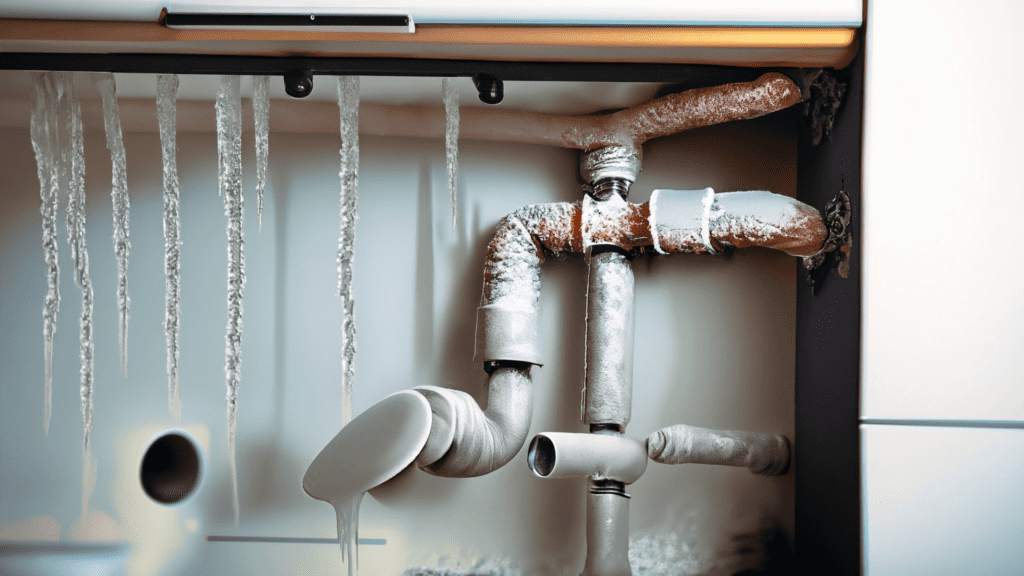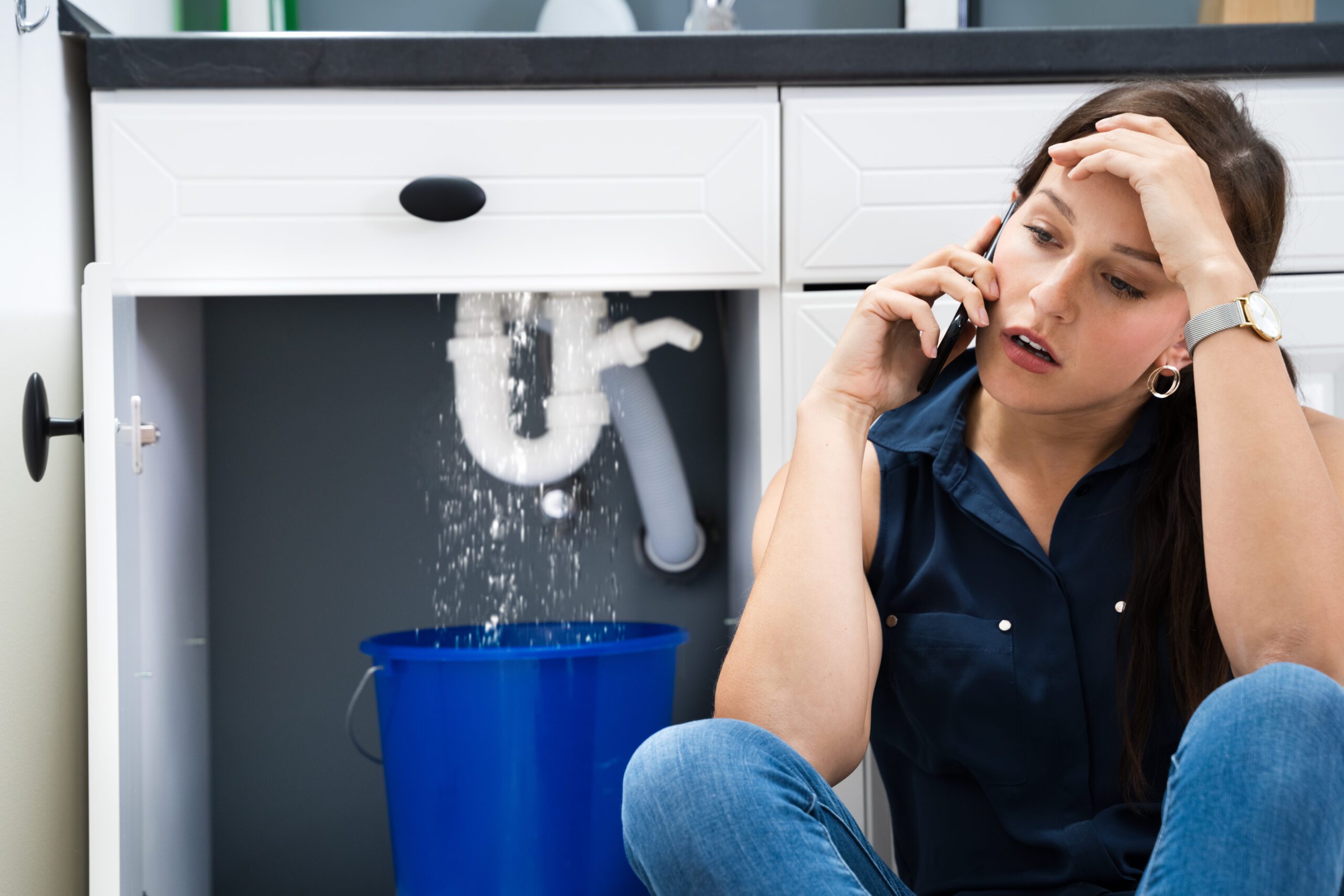
As winter descends, homeowners face the inevitable threat of frozen pipes, this plumbing problem can lead to significant headaches and costly repairs. In this blog post, we’ll explore effective strategies to keep your plumbing safe from the icy grasp of winter, with a special emphasis on preventing and addressing frozen pipes.
At What Temperature do pipes freeze?
Pipes typically begin to be at risk of freezing when the temperature drops to around 20 degrees Fahrenheit (-6 degrees Celsius) or below. However, the actual temperature at which pipes freeze can vary based on several factors, including:
Duration of Cold Weather: Prolonged exposure to cold temperatures increases the likelihood of pipes freezing. Even if the temperature doesn’t drop extremely low, several consecutive hours or days of cold weather can lead to frozen pipes.
Wind Chill Factor: Wind can significantly affect the rate at which pipes freeze. Wind chill makes it feel colder than the actual temperature, and it can accelerate the freezing process by removing the layer of warm air around the pipes.
Insulation: Well-insulated pipes are less susceptible to freezing. Proper insulation can help retain the heat within the pipes and protect them from external cold temperatures.
Location of Pipes: Pipes located in unheated areas, such as basements, crawl spaces, or exterior walls, are more prone to freezing. Insulating these pipes and taking additional precautions in vulnerable areas is crucial.
Building Construction: The type of construction and materials in a building can influence how quickly pipes freeze. Older homes with less insulation may be more susceptible to frozen pipes.
Preventing Frozen Pipes:
- Insulate, Insulate, Insulate: The primary defense against frozen pipes is insulation. Identify vulnerable areas in your home, such as basements, attics, and crawl spaces, and insulate pipes in these locations. Use foam or fiberglass pipe insulation to create a protective barrier against the cold.
- Seal Cracks and Gaps: Cold air infiltration can turn your home into an icebox. Seal any cracks or gaps in doors, windows, and walls to prevent drafts. This not only keeps your home warmer but also reduces the risk of plumbing frozen pipes.
- Maintain Adequate Heating: Keep your thermostat temperature set the same for both day and night during a cold snap. Don’t let the temperature drop at nighttime if that is something you are accustomed to. This ensures that your home is adequately heated, especially in areas where pipes are exposed to the elements. Consistent heating can go a long way in preventing pipes from reaching freezing temperatures. This may increase your electric bill for a short period but will prevent a costly pipe burst.
- Let Faucets Drip During Extreme Cold: On exceptionally cold nights, allow faucets to drip slightly. This keeps water moving, reducing the likelihood of freezing. Don’t forget to focus on faucets connected to pipes along exterior walls.
- Disconnect and Drain Outdoor Hoses: Outdoor hoses and faucets are particularly susceptible to freezing. Disconnect hoses, drain them, and store them in a warmer place. Shut off outdoor water valves and insulate faucets to prevent plumbing frozen pipes in these areas.
- Keep Garage Door Closed: Many homes have water supply lines running through the garage. If the garage is left open during freezing temperatures, the cold air can reach these water pipes, increasing the risk of freezing. A closed garage door also helps maintain the overall warmth of your home. If the garage is attached to the house, leaving the door open can allow cold air to infiltrate, making it more challenging to keep indoor temperatures comfortable.
- Leave Sink Cabinet Doors Open: Water supply pipes located under sinks, especially those along exterior walls, are susceptible to freezing during extremely cold temperatures. By leaving the cabinet doors open, you allow warm air from the room to circulate around the pipes. This helps prevent the pipes from reaching freezing temperatures, reducing the risk of them freezing and potentially bursting.
It’s essential to be vigilant during cold weather, especially in regions where winter temperatures can be severe. Taking preventive measures, such as insulating pipes, sealing drafts, and maintaining adequate heating, can help protect your plumbing system from the risks associated with freezing temperatures. If something does happen and your pipes freeze, here is what you can do.
Thawing Frozen Pipes:
Identify the Frozen Section: If you suspect a frozen pipe, first identify the affected area. Look for frost on the exterior of the pipe or a section that feels extremely cold to the touch.
Open Faucets: Before attempting to thaw the pipe, open the faucet connected to it. This allows water to flow freely and relieves pressure as the ice begins to melt.
Apply Heat: Gently apply heat to the frozen section using a hairdryer, heat lamp, or electric heating pad. Avoid using an open flame, as it can be dangerous. Start at the faucet end and work your way toward the blockage.
Use Warm Towels or Wraps: Wrap warm towels or cloths around the frozen pipe. Pour hot water over the towels to speed up the thawing process. Continue until water flows freely from the faucet.
Call a Professional: If you’re unable to thaw the pipe or if there’s a risk of bursting, it’s essential to call a professional plumber. They have the expertise and tools to address the issue safely and effectively.
READ MORE: Will frozen pipes thaw on their own?
By taking proactive measures to prevent frozen pipes and knowing how to thaw them if necessary, you can safeguard your plumbing system against the challenges of winter. Keep your home warm, pipes insulated, and faucets flowing to ensure a trouble-free winter season for your plumbing.
In need of a plumbing company for frozen pipe repair?
If you are near Cincinnati, OH and in need of a plumber contact Quality Comfort Home Services at 513-620-4822 or book online anytime. With years of experience, no hourly rates and hundreds of happy customer reviews, we are happy to help!


